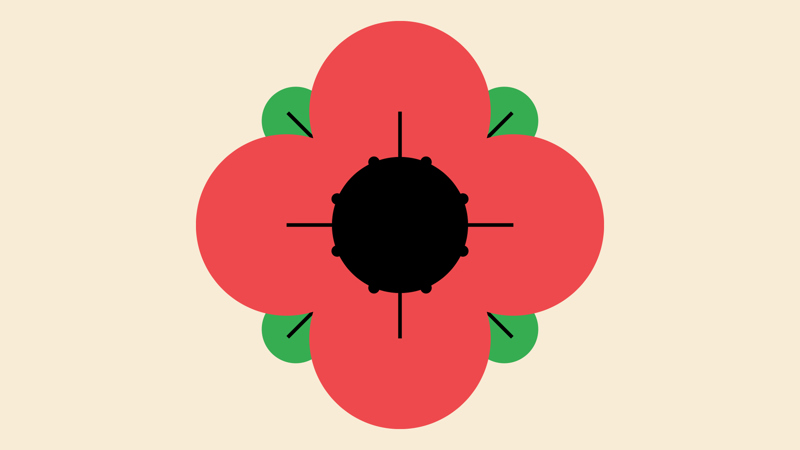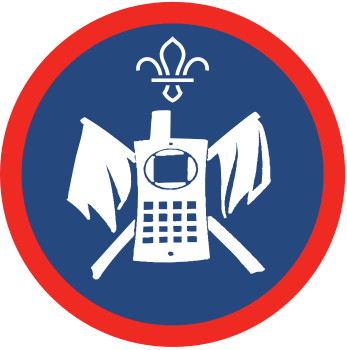
Practice Semaphore signalling
You’ll need
- A4 paper
- Pens or pencils
- Short sticks or twigs
Before you begin
- Use the safety checklist to help you plan and risk assess your activity. Additional help to carry out your risk assessment, including examples can be found here. Don’t forget to make sure all young people and adults involved in the activity know how to take part safely.
- Make sure you’ll have enough adult helpers. You may need some parents and carers to help if you’re short on helpers.
Remembrance honours people who serve to defend our democratic freedom and way of life. We unite across faiths, cultures and backgrounds to remember the service and sacrifice of the Armed Forces community from the United Kingdom and the Commonwealth. We will remember them.
- We remember the sacrifice of the Armed Forces community from the United Kingdom and the Commonwealth.
- We pay tribute to the special contribution of families and of the emergency services.
- We acknowledge innocent civilians who’ve lost their lives in conflict and acts of terrorism.
Remembrance doesn’t glorify war and its symbol, the red poppy, is a sign of both Remembrance and hope for a peaceful future. Wearing a poppy isn’t compulsory but it’s greatly appreciated by those who it’s intended to support. When and how you choose to wear a poppy reflects your individual experiences and personal memories.
Remembrance unites people of all faiths, cultures and backgrounds, but it’s also deeply personal. It could mean wearing a poppy in November, joining with others in your community on a commemorative anniversary, or taking a moment on your own to pause and reflect. Everyone’s free to remember in their own way or to choose not to remember at all.
- Armistice Day is the 11 November. It marks the armistice agreement that bought an end to the fighting of the first world war.
- People pause at 11am on the 11 November to remember service and sacrifice past and present.
- The national service of Remembrance happens on the closest Sunday to 11 November, which is known as Remembrance Sunday. Each year people gather at the Cenotaph in London and other memorial sites.
- We call the whole period around these dates Remembrance. There are many ways to take part in Remembrance
In 2022, the Royal British Legion remembers the Service of those who work to protect us and our ways of life. Whether in the Armed Forces, Emergency or Civilian Services, past or present, we remember who has served, how they served and why it’s important that we continue to remember them.
Planning this activity
- Make sure everyone can access the Semaphore signals guide. You could print some copies off, or people could have a look on a phone or computer.
- You may wish to make some Semaphore flags before the activity to show everyone what they're making, or you could print a picture of them off to show people at the start.
Learning about Semaphore flags
- Gather everyone together.
- Ask if anyone knows anything about World War I.
- Ask if anyone knows anything about Sea Scouts.
- Explain that the Sea Scouts were founded two years after the Boy Scouts in 1909/10. They were a separate branch of Scouts and focused on developing water-based skills, such as sailing or rowing.Despite their name, Sea Scouts didn't have to live near the coast. They could practice their skills on lakes, rivers and canals.
- People were concerned about the threat of invasion, so watching the coast for enemy vessels was very important. During the first world war, Sea Scouts took on roles that supported the coastguard. By taking on these roles the Sea Scouts released adults for military service.
- The Scouts were supervised by the Coastguard and were lead by their Patrol Leaders, who were responsible for giving orders and making sure tasks were completed.
- Their duties were taking and receiving messages, signalling along the coast and to ships at sea, and questioning people about their presence on the coast.
- Visual signalling was often quicker than sending a messenger, so during World War One, the Royal Navy and Coastguard used a two flag ‘semaphore’ system to send messages. Semaphore flag signalling is based on morse code and required a trained signaller and a trained receiver, with a telescope, pencil and notepad, at either end. Light weight silk flags were used, as they were portable. Letters were spelled out according to the position of the arms of the signaller. However, they needed good visibility and daylight.
- Once they found out about the work the Sea Scouts were doing, other Scouts groups came forward to volunteer.
Make some Semaphore flags
- Everyone should split into even numbered groups, such as four or six.
- Give everyone two sheets of paper, some colouring pens or pencils, and two sticks.
- Explain the two sheets of paper will be their two Semaphore flags.
- Usually, the flag's split into two halves. It's divided diagonally from the top left to the bottom right corner. The top section is red and the bottom section is yellow.
- Now, everyone should decorate their two Semaphore flags. They should make sure to draw a diagonal line across the flags before they get started.
- The flags can be decorated however people like. People can use different colours and patterns if they choose to, as long as there’s a clear difference between the two sections on each flag.
- Once everyone's decorated their flags, they should attach the paper to the stick, so it looks like a flag.
- To attach the flag to the stick, poke the stick through one corner of the flag. The stick needs to be two or three centimetres from the edge of the paper. The stick should then follow along the short edge of the paper to the next corner, before poking back through.
- People should do this for both pieces of paper to make two flags. You could also use glue or sticky tape to attach the paper flags to the sticks.
Practice using Semaphore signals
- When everyone’s made their flags, give each group a copy of the Semaphore signals guide and some extra paper.
- Each group should use the Semaphore signals guide to plan out the message that they want to send.
- Groups could choose one person to write down their message on a piece of paper to help them to remember it. This person can also take notes about the message they receive too.
- Each group should stand opposite another group. One group should start using their flags to send their message across to the other group, who can write down what they think it is.
- Once one group has finished, the other group should send their message across using their flags.
- After all messages have been sent, the groups should share what they thought the message was and the senders should reveal the actual message.
Reflection
This activity involved trying something brand new that’s actually hundreds of years old.
Did people enjoy giving Semaphore a go? It was probably fun (if a bit tricky) in the safety of a meeting place.
Can people put themselves in a first world war Sea Scout’s shoes? How do people think they felt as they helped during the first world war? Can anyone remember some of the things they did?
You could think about how important their actions were and how small actions can contribute to big goals. Did trying Semaphore help people think about what life was like for Sea Scouts in the first world war?
In this activity, everyone thought about Remembrance and how it links to their lives. What did people find out about Remembrance? How did it make them feel? How are people going to take part in Remembrance this year?
Safety
All activities must be safely managed. You must complete a thorough risk assessment and take appropriate steps to reduce risk. Use the safety checklist to help you plan and risk assess your activity. Always get approval for the activity, and have suitable supervision and an InTouch process.
- Change the group sizes – more experienced young people may want to work in pairs, while those who haven’t tried Semaphore before may appreciate the support of a group.
- For more of a challenge, the groups could create longer messages or even a whole sentence.
- You could replace the semaphore flags with torches or glowsticks to do this activity in the dark.
People could plan the message even if they don’t take part in showing it to another group. It doesn’t matter if some people struggle to make the exact shapes – they could adapt it so it works for them and what they can do.
All Scout activities should be inclusive and accessible.
Put your Semaphore signalling skills to the test in Road to the code.
Young people should think about what messages they want to send – their messages could be linked to Remembrance, but they don’t have to be.
